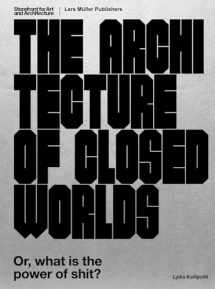
The Architecture of Closed Worlds: Or, What Is the Power of Shit?
Book details
Summary
Description
From Aqualungs to the Eden Project: a history of closed systems
What do outer space capsules, submarines and office buildings have in common? Each was conceived as a closed system―a self-sustaining physical environment demarcated from its surroundings by a boundary prohibiting the transfer of matter or energy. As partial reconstructions of the world in time and space, closed systems identify and implement the basic materials necessary for the sustenance of life.
From the space program to countercultural architectural groups experimenting with autonomous living, The Architecture of Closed Worlds documents a disciplinary transformation and the rise of a new environmental consciousness. It presents an archive of 39 prototypes from 1928 to the present, creating a genealogy of closed-resource structures. These include the FNRS Balloon (1931), Aqualung (1943), House of the Future (1956), Disney's EPCOT (1966), Bios 3 (1972), Rocky Mountain Institute (1982) and the EDEN Project (2000). Prototypes are presented in archival images with new analysis and illustrations. The book also showcases a timeline of the 39 prototypes that illuminates the ways in which they have contributed to the idea of "net-zero" or "zero-energy" in the contemporary discourse on sustainability.


We would LOVE it if you could help us and other readers by reviewing the book
Book review



